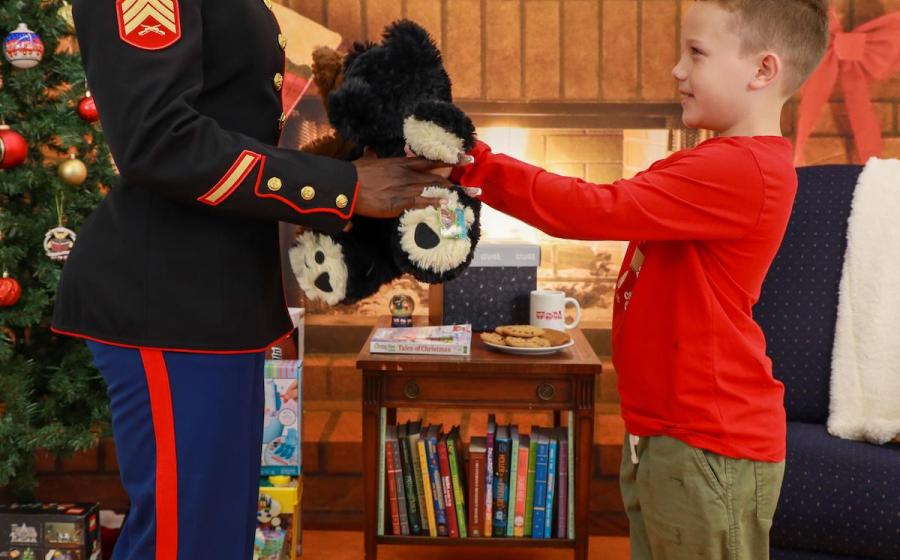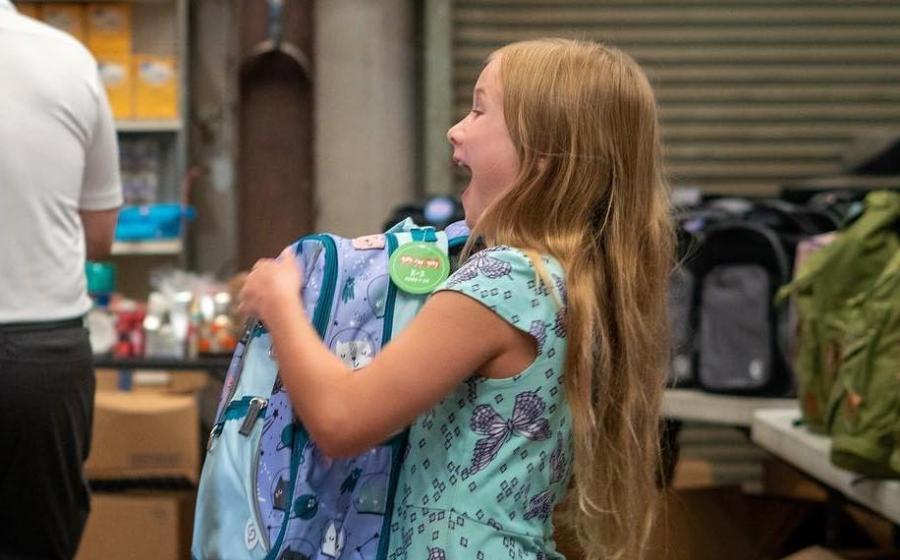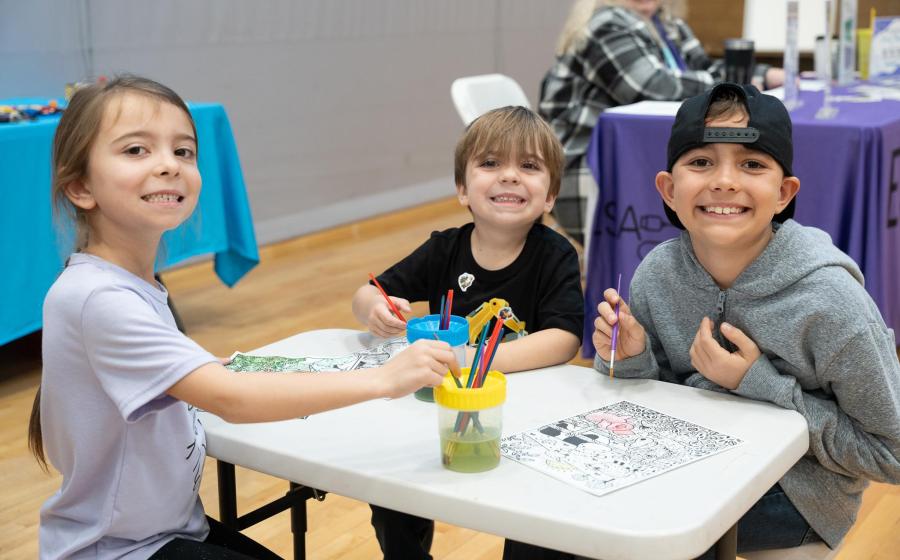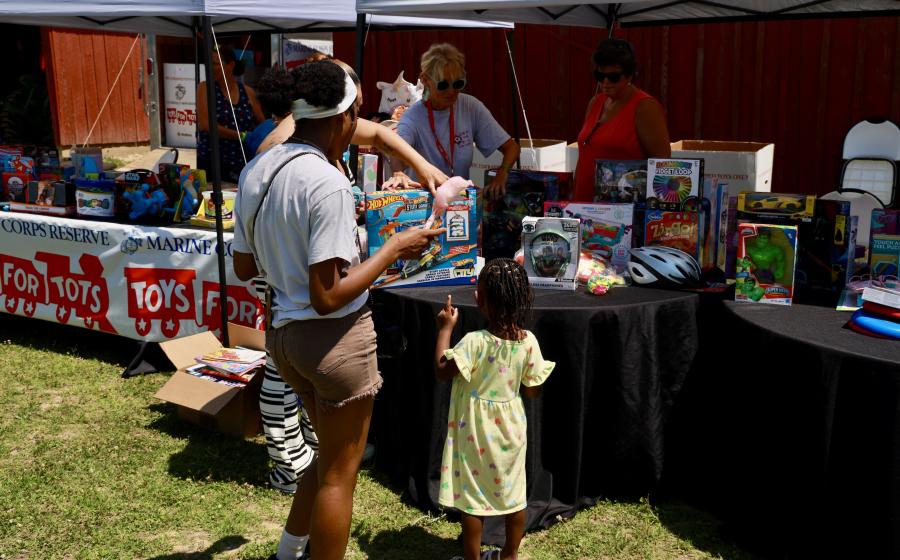A Story Behind Every Gift: Help Toys for Tots Provide Hope This Holiday Season
(NewsUSA) - December is here, and Marine Toys for Tots is once again rallying communities nationwide to ensure a magical Christmas morning for children in need. For families facing hardship, the holidays can bring more worry than wonder, but Toys for Tots’ Holiday Campaign offers a chance to change that story. Every donation carries the power to turn a season of struggle into a season of light for disadvantaged children.
- December is here, and Marine Toys for Tots is once again rallying communities nationwide to ensure a magical Christmas morning for children in need. For families facing hardship, the holidays can bring more worry than wonder, but Toys for Tots’ Holiday Campaign offers a chance to change that story. Every donation carries the power to turn a season of struggle into a season of light for disadvantaged children.
“For many Americans, the holidays are a time of celebration. But for parents and guardians facing difficult circumstances, they can be shadowed by worry,” said Lieutenant General Jim Laster, USMC (Retired), President & CEO of the Marine Toys for Tots Foundation. “Yet even in hardship, families hold onto the dream of giving their children a Christmas. With your support, we can deliver more than presents. We can deliver comfort when families face the unexpected and hope that shines in the darkest seasons.”
That promise of comfort and hope comes to life in the story of Sergeant Christos Toromanides. At 13 years old, he was diagnosed with acinic cell carcinoma, an extremely rare form of pediatric cancer. Throughout his stay in the hospital, Sergeant Toromanides faced uncertainty and isolation, but one act of generosity inspired his future.
Marines from the local Toys for Tots Chapter, in full Dress Blues, visited the children's ward to brighten the holidays for kids spending Christmas away from home. Sergeant Toromanides, then a young teen with no knowledge of the Marine Corps or Toys for Tots, was stunned when a Marine Sergeant walked into his room and placed a Christmas gift in his hands.
“I had no idea who they were or what Toys for Tots was,” he recalled. “But I remember thinking—wow, you guys are in the military, and you’re giving out toys? It was one of those moments where I just wanted to know more.”
That simple act of kindness captures the essence of Toys for Tots: that no child should feel forgotten, especially during the holidays. What Sergeant Toromanides received that Christmas wasn't just a toy; it was proof that hope endures, even in the darkest times.
In 2016, Sergeant Toromanides enlisted in the United States Marine Corps and has been cancer-free for 14 years. His journey has come full circle, and he credits his success to that one moment of connection with Toys for Tots and the generosity of our donors.
Every toy, book, or game holds a story waiting to unfold, and a future waiting to be shaped. When supporters stand with Toys for Tots, they help write new chapters in children’s lives, filled with possibility, purpose, and the assurance that someone cares.
One gift can do more than brighten a holiday—it can inspire a future.
Visit www.toysfortots.org to help Toys for Tots share hope!



 - On December 2nd, the world came together for Giving Tuesday—a day of generosity and impact. At Marine Toys for Tots, Giving Tuesday transformed into Giving TOYSday—the perfect day to support the Program’s mission of delivering toys and hope to children in need.
- On December 2nd, the world came together for Giving Tuesday—a day of generosity and impact. At Marine Toys for Tots, Giving Tuesday transformed into Giving TOYSday—the perfect day to support the Program’s mission of delivering toys and hope to children in need.
 - As the holiday season approaches, millions of children across America face the prospect of waking up to nothing on Christmas morning. Their families, struggling with financial hardship, simply cannot afford toys or gifts. But thanks to Toys for Tots, led by the U.S. Marine Corps Reserve, hope arrives for these children—one toy at a time.
- As the holiday season approaches, millions of children across America face the prospect of waking up to nothing on Christmas morning. Their families, struggling with financial hardship, simply cannot afford toys or gifts. But thanks to Toys for Tots, led by the U.S. Marine Corps Reserve, hope arrives for these children—one toy at a time.
 - As the first signs of the holiday season appear across America, the Marine Toys for Tots Program is rallying the Nation’s compassion. With the launch of its 78th annual Holiday Campaign, this cherished tradition renews its mission to deliver not just gifts, but hope, dignity, and joy to millions of children living in poverty.
- As the first signs of the holiday season appear across America, the Marine Toys for Tots Program is rallying the Nation’s compassion. With the launch of its 78th annual Holiday Campaign, this cherished tradition renews its mission to deliver not just gifts, but hope, dignity, and joy to millions of children living in poverty.
 - On Sunday, September 21st, Marine Toys for Tots returned to the racetrack with Richard Childress Racing (RCR), proudly sponsoring Austin Dillon’s No. 3 Chevrolet in New Hampshire. But this race wasn't just about speed— it was about heart, hope, and the power of possibility through the impact of Toys for Tots and supporters across the Nation.
- On Sunday, September 21st, Marine Toys for Tots returned to the racetrack with Richard Childress Racing (RCR), proudly sponsoring Austin Dillon’s No. 3 Chevrolet in New Hampshire. But this race wasn't just about speed— it was about heart, hope, and the power of possibility through the impact of Toys for Tots and supporters across the Nation. 
 - The end of summer means back-to-school season for families across the country. As parents shop for new backpacks and clothes, they should be sure not to overlook one of the most important parts of the back-to-school checklist – the visual health of their child.
- The end of summer means back-to-school season for families across the country. As parents shop for new backpacks and clothes, they should be sure not to overlook one of the most important parts of the back-to-school checklist – the visual health of their child.
 - For millions of children across America, the back-to-school season is filled with excitement and promise. But for far too many, it begins without access to books—the most critical tool for academic success. Every student deserves to walk into school embraced by the excitement of learning—not burdened by what they lack. Marine Toys for Tots—the Nation’s premier Christmastime children’s charity—has grown into a powerful, year-round force for good. Among its year-round programs, the Toys for Tots Literacy Program continues to provide pages of possibility and ignite a love of reading to disadvantaged children well beyond the holiday season through Operation Turn the Page.
- For millions of children across America, the back-to-school season is filled with excitement and promise. But for far too many, it begins without access to books—the most critical tool for academic success. Every student deserves to walk into school embraced by the excitement of learning—not burdened by what they lack. Marine Toys for Tots—the Nation’s premier Christmastime children’s charity—has grown into a powerful, year-round force for good. Among its year-round programs, the Toys for Tots Literacy Program continues to provide pages of possibility and ignite a love of reading to disadvantaged children well beyond the holiday season through Operation Turn the Page. - News - the good, the bad, the fake - is everywhere, all the time. It’s on our phones, feeds and in our faces 24/7. And while that can be overwhelming for adults, it’s downright distressing for children who haven’t yet developed the skills to look beyond scary headlines, clickbait, and partisan spin.
- News - the good, the bad, the fake - is everywhere, all the time. It’s on our phones, feeds and in our faces 24/7. And while that can be overwhelming for adults, it’s downright distressing for children who haven’t yet developed the skills to look beyond scary headlines, clickbait, and partisan spin.
 - As families across the country prepare for the new school year, many are doing more than buying backpacks and pencils. They’re searching for, evaluating, and choosing from an expanded set of educational options. This year, for millions of families, the first day of classes isn’t just a return, it’s the beginning of something new. Whether a child is making an expected transition to - like starting kindergarten or transitioning to middle or high school, or switching types of schools altogether, parents are making active, thoughtful choices about where their children will learn.
- As families across the country prepare for the new school year, many are doing more than buying backpacks and pencils. They’re searching for, evaluating, and choosing from an expanded set of educational options. This year, for millions of families, the first day of classes isn’t just a return, it’s the beginning of something new. Whether a child is making an expected transition to - like starting kindergarten or transitioning to middle or high school, or switching types of schools altogether, parents are making active, thoughtful choices about where their children will learn.
 - The magic of Christmas doesn’t wait until December, and neither does Marine Toys for Tots. Nationally recognized as America’s flagship children’s Christmastime charity during the holiday season, Toys for Tots remains committed to delivering hope and joy to children in need all year long.
- The magic of Christmas doesn’t wait until December, and neither does Marine Toys for Tots. Nationally recognized as America’s flagship children’s Christmastime charity during the holiday season, Toys for Tots remains committed to delivering hope and joy to children in need all year long.